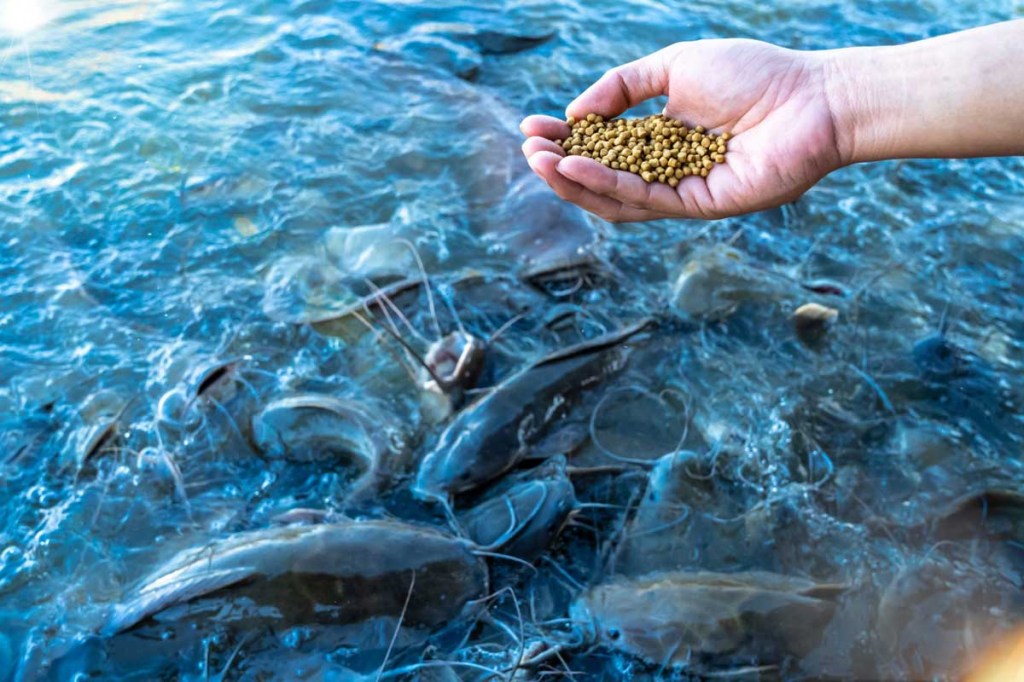Alabama’s Commitment to Sustainable Aquaculture
Published 8:00 am Tuesday, August 2, 2022

- Alabama Extension photo
Alabama is one of the most important aquaculture states in the country. From oysters to catfish, aquaculture farmers are committed to providing a healthy, sustainable product for consumers.
What is aquaculture?
Trending
When thinking of farming, your first thought might not be farming in water. This practice of using water to grow aquatic species is known as aquaculture. Aquaculture is important to Alabama as farmers raise catfish, crawfish, oysters, shrimp, sport fish, baitfish and other species for a wide variety of markets.
“Alabama is one of the most important aquaculture states in the United States, ranking 6th in aquaculture sales,” said Luke Roy, an Alabama Cooperative Extension System associate professor. “The catfish industry alone accounts for approximately 2,500 jobs in the state and a total output in sales of more $300 million each year.”
Alabama’s Dominant Aquaculture Species
Catfish is the primary farm-raised fish species in Alabama. Roy, who is a professional in aquatic resources, said the state currently produces 33 percent of the catfish raised via commercial aquaculture in the U.S. and is only second in production and sales to Mississippi.
In recent years, Alabama has raised nearly 100 million pounds of catfish on more than 16,000 acres of production ponds. Located mostly in west Alabama–Hale, Dallas, Greene and Perry counties are the primary producers of catfish in the state.
Scientific Research in Aquaculture
Professionals at Auburn University are currently performing a plethora of research to ensure the sustainability of aquaculture. Some of these projects include research that improves the efficiency of production systems, making them more cost-effective.
At the 1600-acre E.W. Shell Fisheries Center, feed management for commercially-produced aquatic species is currently at the forefront of research.
“Auburn faculty are working with commercial producers to develop better feeds and more efficient feed management techniques,” Roy said. “Other research studies are aiming at improving water quality and culture conditions as well as studying aquatic animal diseases, therapeutants and treatments.”
Feeding the Next Generation
A commitment to sustainable farming practices and techniques used by Alabama aquaculture producers will guarantee the success of this farming industry for future generations.
Like with most farming practices in Alabama, efficiency is the ultimate goal. By integrating sustainable production practices developed from research into aquaculture, farmers will ensure that every family has access to tasty, nutritious and safe protein sources. This mission is the driving factor for Roy’s work. Having grown up in a developing country, Roy was exposed to extreme poverty. Many families struggled to put enough food on the table to eat.
“Aquaculture seemed like a logical solution to help alleviate poverty and provide food for the hungry,” Roy said. “At that point I was hooked on aquaculture and have been ever since.”
More Information
To learn more about aquaculture and how it is important to Alabama, visit the Alabama Extension website at www.aces.edu. You may also explore the aquaculture webpage to find more ways that farmers are using water resources to sustain Alabama.
Down to Earth: Agriculture Sustains Alabama
Alabama Extension is getting Down to Earth. Why? Because agriculture sustains Alabama. Whether your ag experience is in the grocery store, in the classroom or as your profession—Extension has a resource for you.
We are proud to be partnering with the Alabama Agribusiness Council, the Alabama Cattlemen’s Association, the Alabama Department of Agriculture and Industries, the Alabama Farmers Federation, the Alabama Poultry and Egg Association, the Alabama Forestry Commission, Sweet Grown Alabama and the Alabama Association of RC&D Councils.
Alabama Extension’s Down to Earth resources are available on www.aces.edu/go/DowntoEarth.


